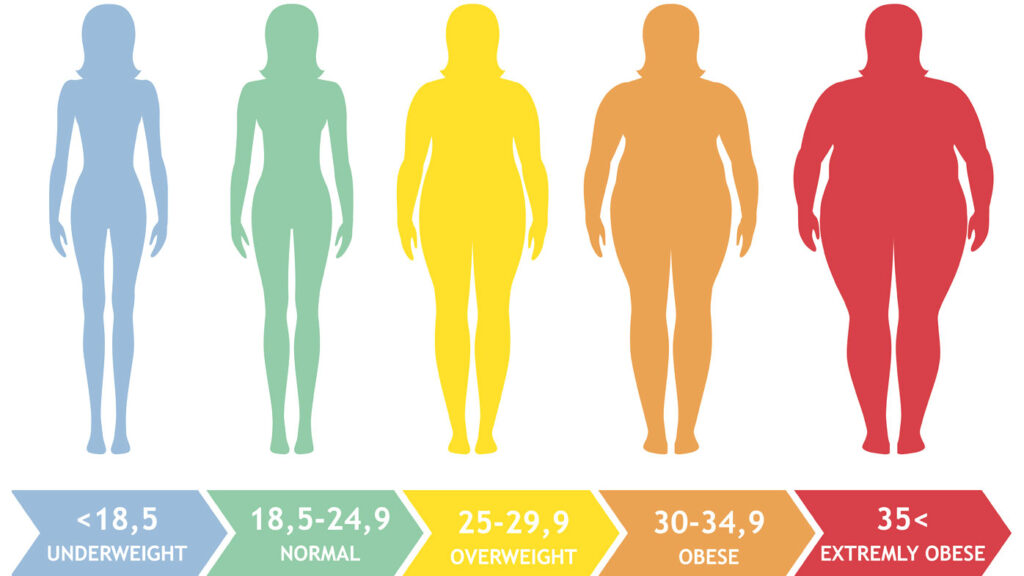Menu
16/1/3, The Landmark building, 3rd floor, Janjeerwala Square, near Sodani Diagnostic Center, Near Janjeerwala Square, Opposite B.B.C, Race Course Road, Indore, Madhya Pradesh 452001

Obesity is most commonly defined by BMI (Body Mass Index) calculated Weight in Kgs / (Height in m)2.
| BMI | Class of Obesity |
|---|---|
| 25 – 30 | Overweight |
| 30 – 35 | Class I obesity |
| 35 – 40 | Class II obesity |
| >40 | Class III obesity (Morbid obesity) |
| >50 | Super-obese |
| >60 | Super-super obese |
| >70 | Mega obese |
BMI can be a useful tool to measure the excess weight and the grade of obesity that an individual is suffering from. It is calculated as a proportion of the weight and height of a particular individual. Generally, the higher the BMI, the greater is the percentage of fat in the body and consequently increased risk for various metabolic diseases. The BMI of an individual can also be increased because of increased muscle mass as in bodybuilders and in medical conditions which lead to increased water retention in the body, such as hypothyroidism, and liver and renal diseases. Other factors such as skinfold thickness measurements, evaluations of diet, physical activity and family history, are also taken into account by your Bariatric Surgeon.
16/1/3, The Landmark building, 3rd floor, Janjeerwala Square, near Sodani Diagnostic Center, Near Janjeerwala Square, Opposite B.B.C, Race Course Road, Indore, Madhya Pradesh 452001
© 2025 Dr. ACHAL AGRAWAL | All Rights Reserved | Powered by Mrdigito.com